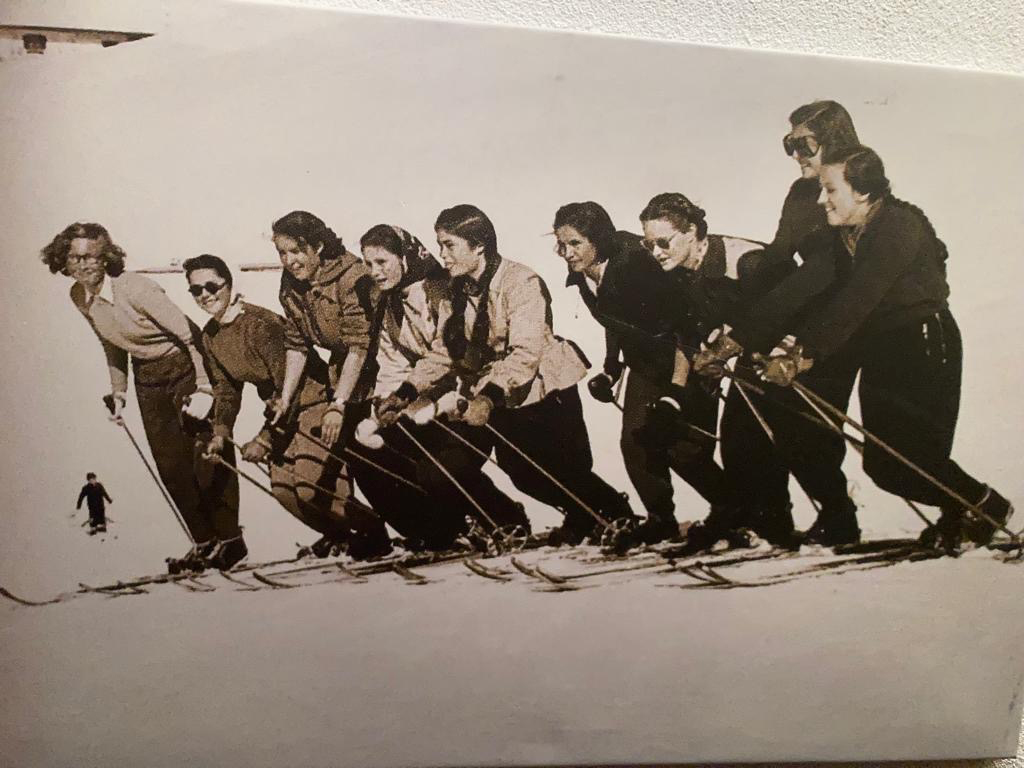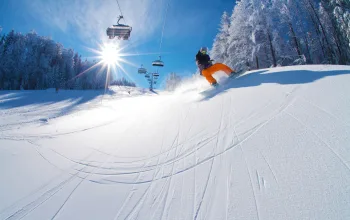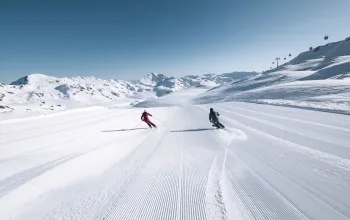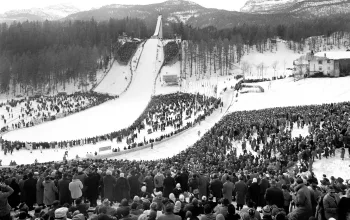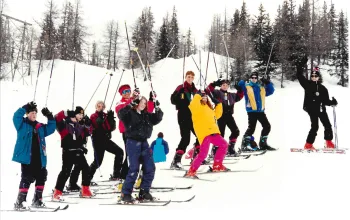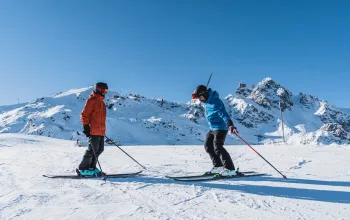 It’s fair to say that the first president of the Ladies’ Ski Club was somewhat of a multi-tasker. Lady Denman, who was appointed in 1924, was a supporter of women’s suffrage who went on to found the Women’s Institute, chair the first Family Planning Association and become the director of the Women’s Land Army during WWII. The club was founded a year earlier by Mabel Lunn, whose husband Arnold Lunn (a keen skier credited with inventing slalom skiing in 1922) encouraged his wife to found a club for female ski racers. The first members were Mabel’s friends and fellow ski racers Mavis Harvey and Dame Katherine Furs.
It’s fair to say that the first president of the Ladies’ Ski Club was somewhat of a multi-tasker. Lady Denman, who was appointed in 1924, was a supporter of women’s suffrage who went on to found the Women’s Institute, chair the first Family Planning Association and become the director of the Women’s Land Army during WWII. The club was founded a year earlier by Mabel Lunn, whose husband Arnold Lunn (a keen skier credited with inventing slalom skiing in 1922) encouraged his wife to found a club for female ski racers. The first members were Mabel’s friends and fellow ski racers Mavis Harvey and Dame Katherine Furs.
Sportsmanship—or should that be sportswomanship—was at the heart of everything they did. Take Doreen Elliott who, in 1928, competed in the very first Inferno ski race and finished fourth, despite spending ten minutes assisting a fellow skier who’d taken a tumble. Or Esmé Mackinnon, who won the first World Alpine Ski Championships for Ladies in Lauterbrunnen, Switzerland in 1931. At one point during the race, Mackinnon stopped respectfully when she’d come across a funeral procession snaking across her route (the judges paused their stopwatches while the procession passed).
Today’s leaders continue to wear multiple hats, and put their stamp on the sport in various ways. Dr Jenny Shute MBE, who was president between 2002 and 2005, also managed the British Children’s Ski Team for 18 years and is now Vice-Chair of the FIS Medical Committee, often acting as medical director at major ski race meetings.
Meanwhile the institution, which is the world’s oldest women’s alpine ski club, continues to be open to all, and runs a packed calendar of events for amateurs. It’s also continued the now 100-year-old tradition of helping boundary-pushing skiers, offering financial support not only to alpine ski racers but also to freestylers like slopestyle star Kirsty Muir, Team GB snowboarder Maisie Potter, and Jasmin Taylor, the first Briton to win a World Championship medal in telemark skiing.
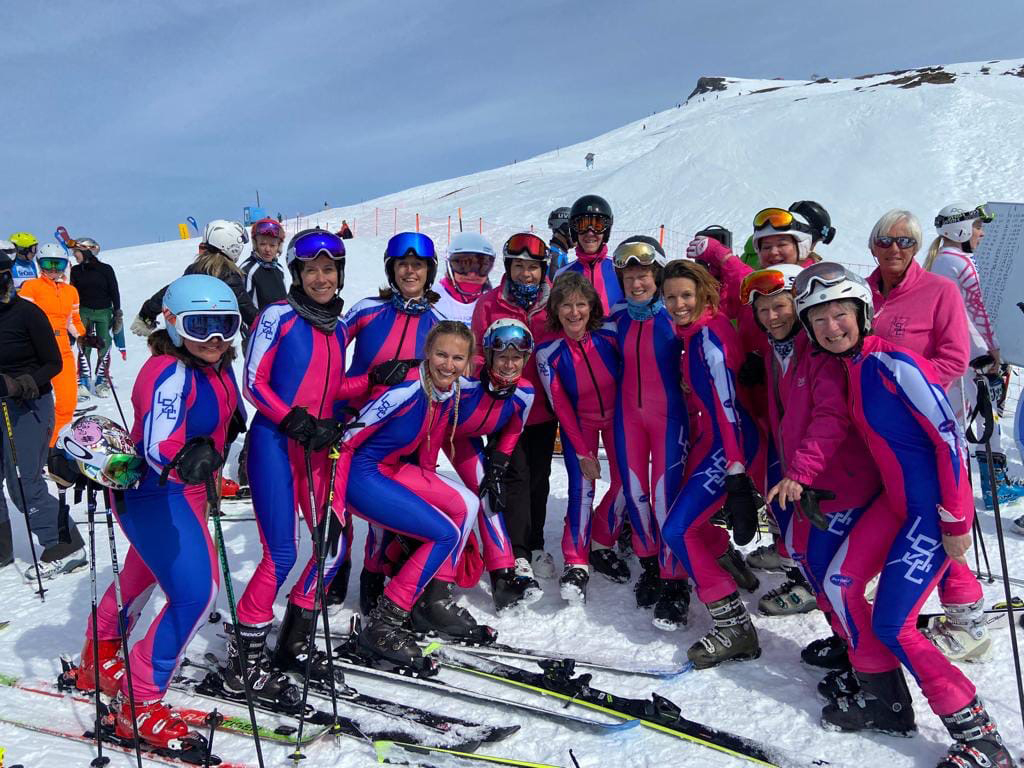
At a time when the lottery-funded, UK Sport grants for skiers are being slashed, the fundraising aspect has never been more important. “Last year’s decision by UK Sport to stop funding top class alpine ski racers has made it even more difficult for athletes to achieve their potential,” Gayle Parsons, Vice President of the Ladies’ Ski Club tells SNOW. “This is precisely why organisations such as ours are so important.”
For current president Ingrid Christophersen, their success in fundraising for female athletes—combined with the letters of they regularly get sent by grant recipients—are a wonderful reminder of how much progress has been made. “Years ago, skiing was thought of as a rich man’s hobby,” she says. “The British teams consisted of girls who either lived abroad, went to school abroad, or those whose parents had enough money to ski abroad several times a year,” she points out. “They were lucky if they got a team sweater!”
As well as its stellar work in keeping underfunded athletes’ dreams alive, the organisation also helps women to get involved behind the scenes. The club currently offers Technical Delegate courses, for example, for those keen to take on refereeing or judging roles—two areas where women are currently under-represented. Like its first president Lady Denman, the club continues to wear many hats—and to evolve in ways that Mabel Lunn, Mavis Harvey, Dame Katherine Furs et al. would no doubt be proud of.
“It’s still a ladies’ club but it’s also much more than that,” Ingrid says. A century after it was founded, the club is testament to girl power, and one which has gone from strength to strength. “There was a time when the Ladies’ Ski Club was thought of as just a club for women you’d describe as gentile ladies,” Ingrid says. “But today, we’re a force to be reckoned with”.


